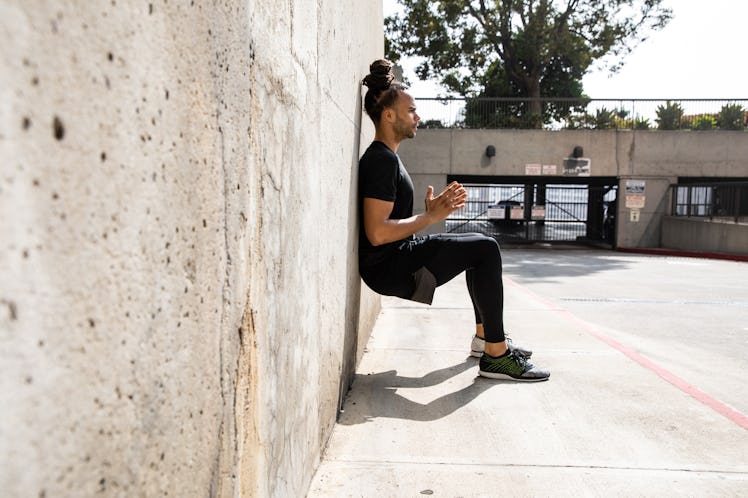The Best Exercise To Lower Blood Pressure Is Way Simpler Than You'd Expect
A new study finds that isometric exercise is the best way to lower your blood pressure — and that one grueling move, in particular, is the most effective overall.

High blood pressure affects nearly half of Americans over age 20, and that’s a very bad thing — it’s a risk factor for cardiovascular disease and stroke, which are the leading causes of death in the U.S. Nearly 700,000 people in the U.S. died of hypertension-related illnesses in 2021. There are plenty of ways to treat high blood pressure, but exercise is commonly prescribed by physicians as a nonmedical hypertension intervention. But what type of exercise is most effective at bringing high blood pressure closer to healthy levels? Is it endurance cardio? HIIT? Low-intensity lifting? Pilates?
According to a new study published in the British Journal of Sports Medicine, one particular type of exercise is dramatically more effective at lowering blood pressure than others. Isometric exercise was found to be incredibly effective at lowering blood pressure, for a somewhat surprising reason.
Isometric exercises are bodyweight or weighted exercises done in a stationary position, such as planks, reverse lunge holds, side planks, squat holds, isometric push-ups, dead hangs, glute bridges, or wall sits. These exercises are held for time, and resistance can be your own body weight or added weights.
What’s most heartening about this finding is that isometric exercise is a fairly accessible type of workout. “Isometric exercises are ideal for those with limited workout space, people recovering from an injury, or anyone simply needing a change in their typical fitness routine,” Healthline reports.
Cardio, dynamic resistance training, high-intensity interval training, and combination workouts were also effective at lowering blood pressure, but isometrics outshone them all.
For the study, a research team from Canterbury Christ Church University in the UK examined data collected in 270 randomized trials performed between 1990 and 2023, with more than 15,000 total participants. They found that exercise in general is great for high blood pressure. Both diastolic and systolic blood pressure were reduced after cardio, dynamic resistance training, HIIT, combination workouts, and isometric exercise sessions — but the most improvement occurred after isometrics.
High blood pressure is defined as any above 130/85 mmHg. The top number, systolic pressure, represents the arterial pressure when your heart contracts. The bottom number, diastolic pressure, represents the arterial pressure when your heart is at rest between contractions.
The reductions in blood pressure after a cardio exercise session averaged a decrease of 4.49/2.53 mmHg, reductions after dynamic resistance training averaged 4.55/3.04 mm Hg, reductions after a combination exercise session averaged 6.04/2.54 mmHg, after HIIT averaged 4.08/2.50 mmHg, and the decrease after isometric exercise averaged 8.24/4 mmHg. The researchers found that isometric exercise was 98% effective in reducing both systolic and diastolic blood pressure.
What’s perhaps even more interesting is that they found one particular exercise — not just an exercise type — that’s incredibly effective at lowering blood pressure. Wall sits, that workout from hell, were the most effective of the isometric exercises examined, lowering both blood pressure numbers.
“These findings provide a comprehensive data-driven framework to support the development of new exercise guideline recommendations for the prevention and treatment of arterial hypertension,” the research team wrote.
The study authors note several limitations to the study. Due to the size of the study and the high number of previous trials that were analyzed, it was difficult to control for participant populations, control group monitoring, inconsistencies among exercise training literature, and other inconsistencies.
Ultimately, one of the biggest takeaways from the study is that exercise is powerful prevention and treatment for high blood pressure — so however you exercise, so long as you do it consistently, you are doing your body (and your mind) a huge favor. And if you're sold on isometric exercises being your new workout routine, check out these eight isometric moves that will transform your fitness routine.
This article was originally published on